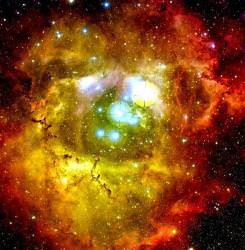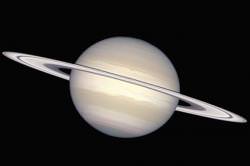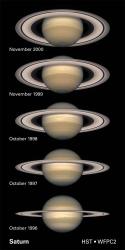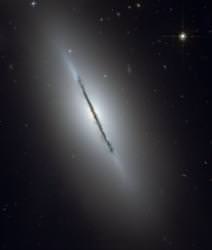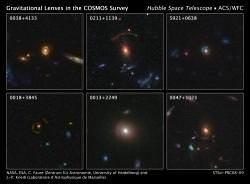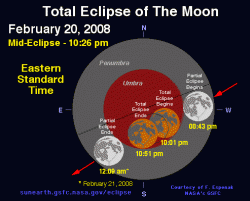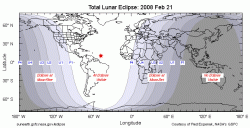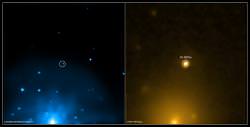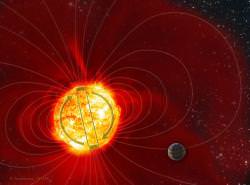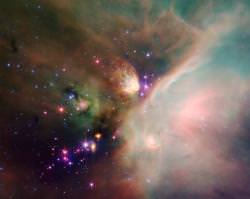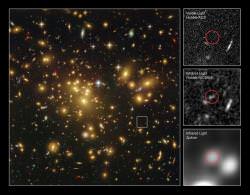You’ve got to love the audacity of this idea. In a recent article at Discover Magazine, virtual reality pioneer Jaron Lanier (you know, the guy with the dreadlocks) proposes that we get working on repositioning nearby stars to form geometric patterns – or at least start looking for places that it’s already been done by aliens.
Move stars around into patterns? That’s pretty crazy stuff. Sure, but there isn’t any physical reason why it isn’t possible; it happens all the time when galaxies collide. Of course, a spray of stars hurled into intergalactic space at random is different from a great big peace sign.
In order to actually move a star requires a gravitational tractor, and engineers are already planning this kind of a mission for a threat closer to home: asteroids. By flying a spacecraft near an asteroid, and fighting against the gravity pulling it down, you can actually pull the asteroid off course. Over a long period of time, you can move the asteroid enough in its orbit to prevent it from striking the Earth.
So scale that idea up. Send out a fleet of these spacecraft to tinker with the orbits of Kuiper Belt objects. These objects could rain into the inner Solar System and prod the Sun’s motion through the galaxy. Over a long period of time (a really really long period of time), you could impart enough of a velocity change to drive your star anywhere you wanted it to go.
With this technique, and a few million years to time to kill, you could line up stars into a formation that shows an intelligence was behind it. The more stars you put into formation, the better your message will be.
One interesting suggestion, made to Lanier by Piet Hut at the Institute for Advanced Study is a multiply nested binary system. Imagine binary systems, orbiting binary systems, orbiting binary systems. With 16 stars in formation, you’d have a shape that mother nature would never arrange on her own, but would be stable for long periods of time. From long distances, astronomers wouldn’t be able to resolve the individual stars, but they’d definitely know something strange was going on.
The advantage to this, of course, is that stars are visible for tremendous distances. Why bother sending out puny radio signals when you can harness the energy of an entire star.
Physicists predict that civilizations will eventually advance to the point that they master all the energy of their home planet, their star system, and eventually their entire galaxy. And if you’re harnessing every watt of energy pouring out of every star in the galaxy, who’d miss a little extra energy being used for communications.
So, uh… let’s get on that.
Original Source: Discover Magazine

